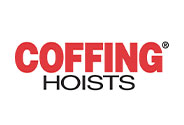 Operating a manual level chain hoist offers many benefits, but misuse can cause considerable damage. Safety should be the most crucial consideration when engaging in material handling because the wrong move can shut down a business and cause harm to employees. OSHA claims that the leading causes of safety compromises come from employees making errors, whether those errors are dumb or neglectful. The only people who should operate and inspect hoists should be trained and familiar with their specific system. Coffing hoist parts differ from Little Mule ones and have different operational and maintenance requirements. Knowing the dos and don'ts of your system is incredibly important to ensure the highest safety levels in the workplace.
Operating a manual level chain hoist offers many benefits, but misuse can cause considerable damage. Safety should be the most crucial consideration when engaging in material handling because the wrong move can shut down a business and cause harm to employees. OSHA claims that the leading causes of safety compromises come from employees making errors, whether those errors are dumb or neglectful. The only people who should operate and inspect hoists should be trained and familiar with their specific system. Coffing hoist parts differ from Little Mule ones and have different operational and maintenance requirements. Knowing the dos and don'ts of your system is incredibly important to ensure the highest safety levels in the workplace.
What are the dos and don'ts for a Coffing lever chain hoist?
- The most important rule is not specific to Coffing hoist parts: always read the operations manual from front to back. As mentioned above, each system is different. The only way to know a machine and how it differs from other systems is to read up on it.
- After reading the manual, make sure to become familiar with the operating controls, the unit's warning signs, and the proper procedures.
- Before lifting, you should always ensure the area is clear of people and other debris.
- Do not, under any circumstance, overload Coffing hoist parts. Each part of a hoist is rated for a lifting capacity, the maximum weight it can lift before jeopardizing safety. It is better to break up loads and move them individually than to push a system past its breaking point (this is the most common cause of injury during material handling).
The key to safety when using hoist parts is knowing and treating the system with the utmost respect. For more information on acquiring replacement Coffing hoist parts, you should check out our catalog or call our team.